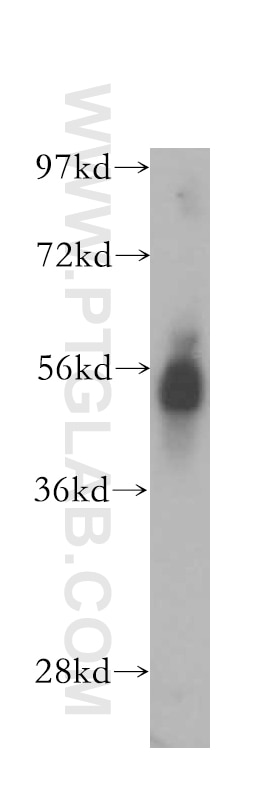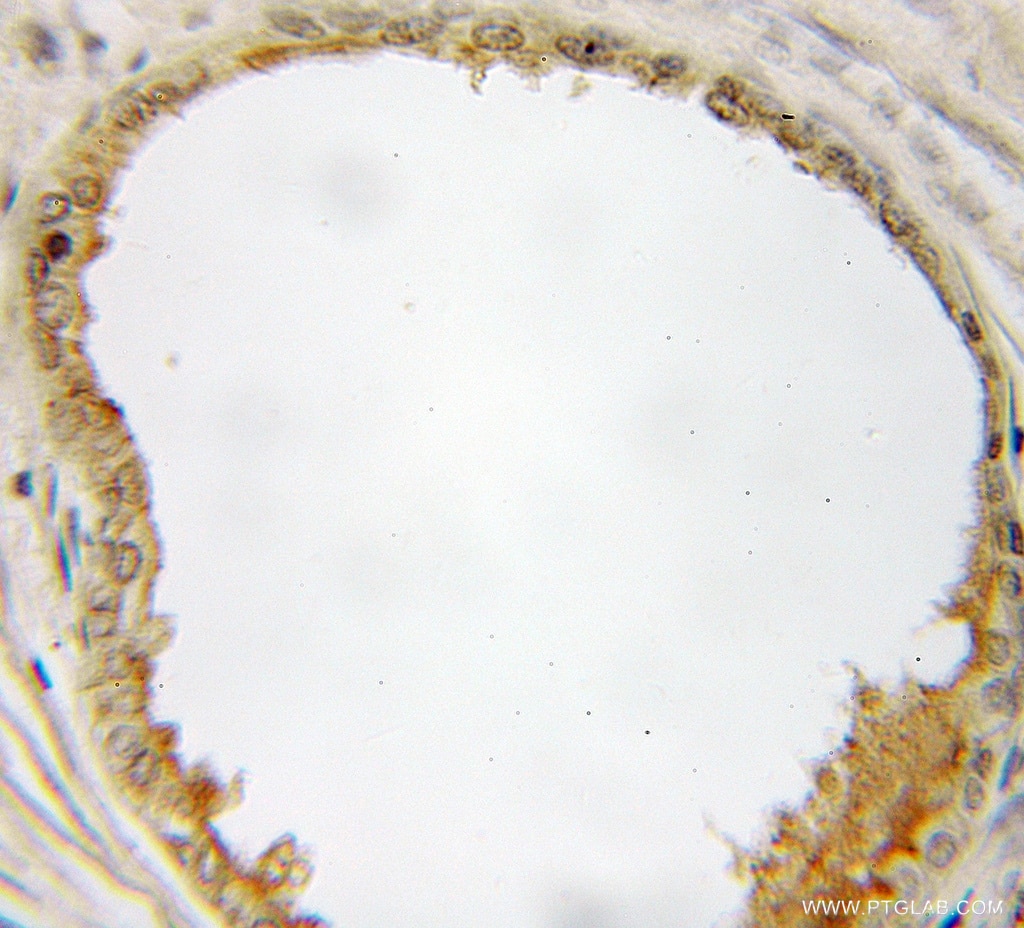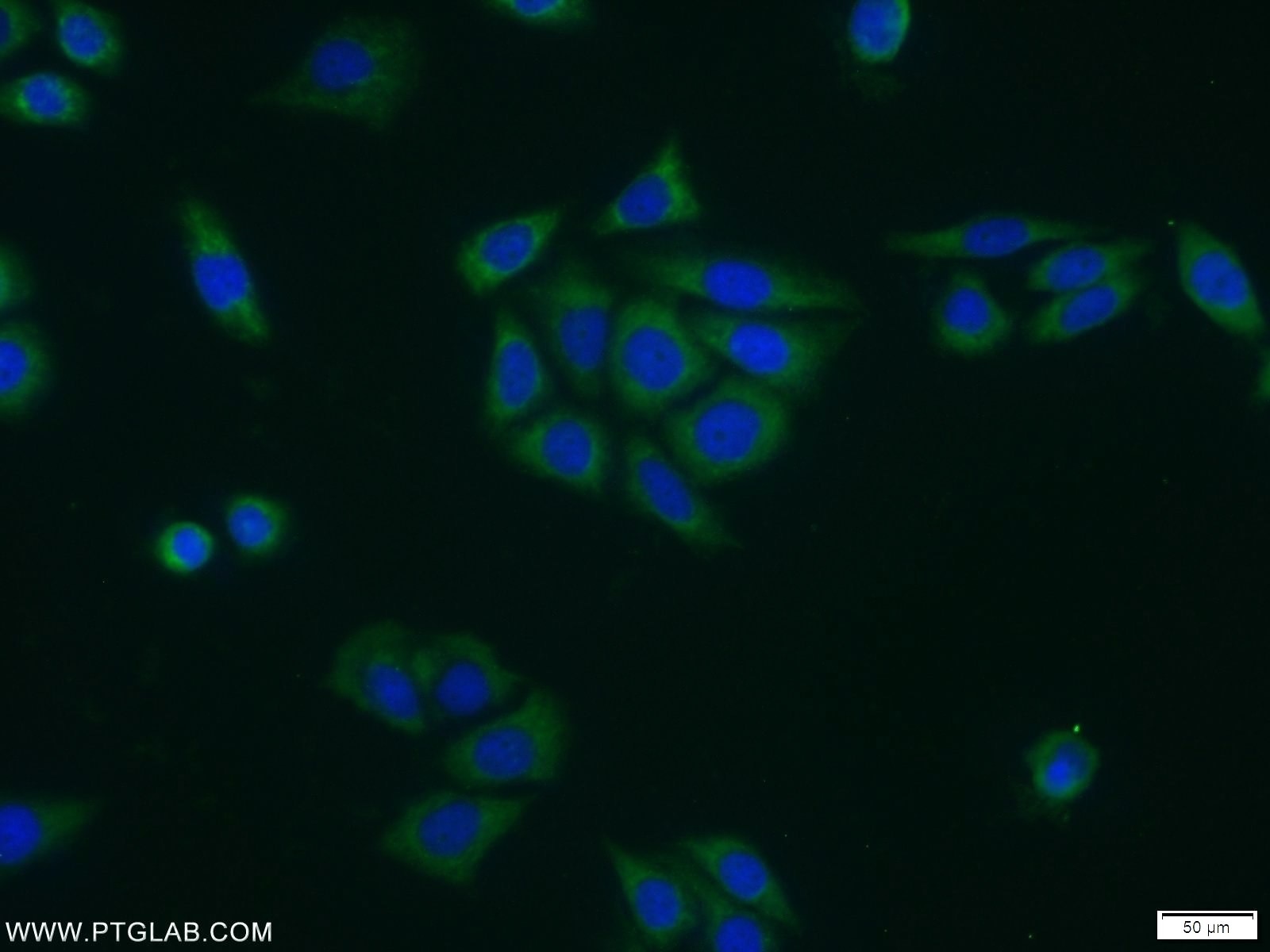- Featured Product
- KD/KO Validated
DPP4/CD26 Polyklonaler Antikörper
DPP4/CD26 Polyklonal Antikörper für WB, IF, IHC, ELISA
Wirt / Isotyp
Kaninchen / IgG
Getestete Reaktivität
hamster, human und mehr (1)
Anwendung
WB, IF, IHC, ELISA
Konjugation
Unkonjugiert
Kat-Nr. : 10940-1-AP
Synonyme
Geprüfte Anwendungen
| Erfolgreiche Detektion in WB | PC-3-Zellen |
| Erfolgreiche Detektion in IHC | humanes Prostatakarzinomgewebe Hinweis: Antigendemaskierung mit TE-Puffer pH 9,0 empfohlen. (*) Wahlweise kann die Antigendemaskierung auch mit Citratpuffer pH 6,0 erfolgen. |
| Erfolgreiche Detektion in IF/ICC | PC-3-Zellen |
Empfohlene Verdünnung
| Anwendung | Verdünnung |
|---|---|
| Western Blot (WB) | WB : 1:500-1:1000 |
| Immunhistochemie (IHC) | IHC : 1:20-1:200 |
| Immunfluoreszenz (IF)/ICC | IF/ICC : 1:10-1:100 |
| It is recommended that this reagent should be titrated in each testing system to obtain optimal results. | |
| Sample-dependent, check data in validation data gallery | |
Veröffentlichte Anwendungen
| KD/KO | See 1 publications below |
| WB | See 7 publications below |
| IHC | See 2 publications below |
| IF | See 4 publications below |
Produktinformation
10940-1-AP bindet in WB, IF, IHC, ELISA DPP4/CD26 und zeigt Reaktivität mit hamster, human
| Getestete Reaktivität | hamster, human |
| In Publikationen genannte Reaktivität | human, Ratte |
| Wirt / Isotyp | Kaninchen / IgG |
| Klonalität | Polyklonal |
| Typ | Antikörper |
| Immunogen | DPP4/CD26 fusion protein Ag1380 |
| Vollständiger Name | dipeptidyl-peptidase 4 |
| Berechnetes Molekulargewicht | 88 kDa |
| Beobachtetes Molekulargewicht | 55-60 kDa |
| GenBank-Zugangsnummer | BC013329 |
| Gene symbol | DPP4 |
| Gene ID (NCBI) | 1803 |
| Konjugation | Unkonjugiert |
| Form | Liquid |
| Reinigungsmethode | Antigen-Affinitätsreinigung |
| Lagerungspuffer | PBS with 0.02% sodium azide and 50% glycerol |
| Lagerungsbedingungen | Bei -20°C lagern. Nach dem Versand ein Jahr lang stabil Aliquotieren ist bei -20oC Lagerung nicht notwendig. 20ul Größen enthalten 0,1% BSA. |
Hintergrundinformationen
DPP4 (also known as CD26) is a serine exopeptidase that cleaves X-proline dipeptides from the N terminus of polypeptides. It is an intrinsic membrane glycoprotein anchored into the cell membrane by its N-terminal end. High levels of the enzyme are found in the brush-border membranes of the kidney proximal tubule and of the small intestine, but several other tissues also express the enzyme. The enzyme is present in the fetal colon but disappears at birth. It is ectopically expressed in some human colon adenocarcinomas and human colon cancer cell lines(PMID:1977364).The dimeric 150- 220 kDa DPPIV has been reported to be active and accessible to DFP labeling, but the 110 kDa monomeric DPPIV is not(PMID:9065413). Sometimes traces of the 290 kDa active dimeric form of DPP IV as well as a 55-60 kDa protein appeared in the immunopurified DPP IV preparation. N-terminal amino acid sequence analysis revealed that the 55-60 kDa protein represents a fragment of DPP IV starting at amino acid 28.(PMID:9654125).
Protokolle
| PRODUKTSPEZIFISCHE PROTOKOLLE | |
|---|---|
| WB protocol for DPP4/CD26 antibody 10940-1-AP | Protokoll herunterladen |
| IHC protocol for DPP4/CD26 antibody 10940-1-AP | Protokoll herunterladenl |
| IF protocol for DPP4/CD26 antibody 10940-1-AP | Protokoll herunterladen |
| STANDARD-PROTOKOLLE | |
|---|---|
| Klicken Sie hier, um unsere Standardprotokolle anzuzeigen |
Publikationen
| Species | Application | Title |
|---|---|---|
Oncogene ApoC1 promotes the metastasis of clear cell renal cell carcinoma via activation of STAT3. | ||
Hypertension Dipeptidyl peptidase IV regulates proliferation of preglomerular vascular smooth muscle and mesangial cells. | ||
Int J Mol Sci Preclinical Repurposing of Sitagliptin as a Drug Candidate for Colorectal Cancer by Targeting CD24/CTNNB1/SOX4-Centered Signaling Hub | ||
Biochem Pharmacol Dipeptidyl peptidase-4 inhibition improves endothelial senescence by activating AMPK/SIRT1/Nrf2 signaling pathway.
| ||
Endocrinology Dipeptidylpeptidase inhibition is associated with improvement in blood pressure and diastolic function in insulin-resistant male Zucker obese rats. | ||
J Agric Food Chem A Low ω-6/ω-3 Ratio High-Fat Diet Improves Rat Metabolism via Purine and Tryptophan Metabolism in the Intestinal Tract, While Reversed by Inulin. |




